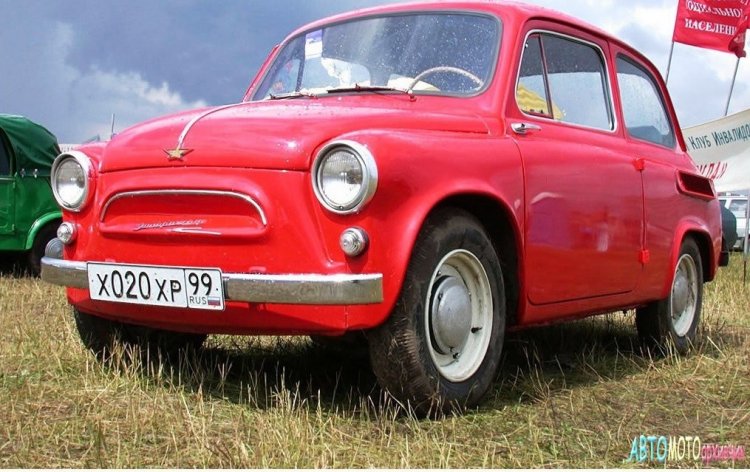
The first Soviet model meant for common people was Moskvich-400. This full clone of German Opel Kadett was issued in the first postwar year. In 1954 the vehicle got a new engine and was renamed into Moskvich-401. Two years later, the model was discontinued and replaced by a more expensive one in accordance with the plant’s ambitions. The little man was again left without a model he/she could afford. Meanwhile, Germany was producing Volkswagen Beetle, while Italian Fiat-6000 Seicento created such a stir that it was included as a symbol into a cult-favorite song Italiano by Toto Cutugno. The soviet authorities were impressed. The Council and Ministers and the CPSU Central Committee issued a decree, and Moskvich Plant began to copy the successful rear-engine model without forgetting, by the way, about, Volkswagen Beetle (some parts were borrowed from this vehicle). The designers successfully copied the bodywork and the rest, yet failed to do it with the engine. Thus they had to make the rear part bulging, as it was not enough room in the engine compartment for a compromise in the form of military motor. The new motor was also a copy of a foreign one (this time the vehicle in question was a BMW). The car was nicknamed hunchback by the people. It was not a part of Moskvich family, as the Moscow-based plant was producing Moskvich-407 at that time. Thus the project was handed over to Kommunar combine-producing plant in Zaporozhye. The little hunchback received letters ZAZ onto the trunk lid which was at the place of hood. This fact was a topic of many anecdotes about engines on the way. The car would produce awful noise and shake like a vacuum cleaner. The doors would open to the back and play the role of brake parachutes. One more anecdote described ZAZ model as the one capable of being driven without brakes. Its interior would not house tall people, while a person of average height had to sit with his knees pressed against his/her ears. The jokers would say that it is the reason behind the absence of radio receiver in the car. The speed of ZAZ vehicle ruled out the very thought about overtaking. However, Zaporozhets successfully traveled along the roads, where a Mercedes would get stuck, was undemanding with regards to being fueled, could be fixed at any kind of garage and – the main thing – it had a roof, unlike motorcycle, and was affordable. After denomination, the price of this little hunchback amounted to 1,800 rubles, i.e., 18 monthly salaries of a Soviet engineer.
























